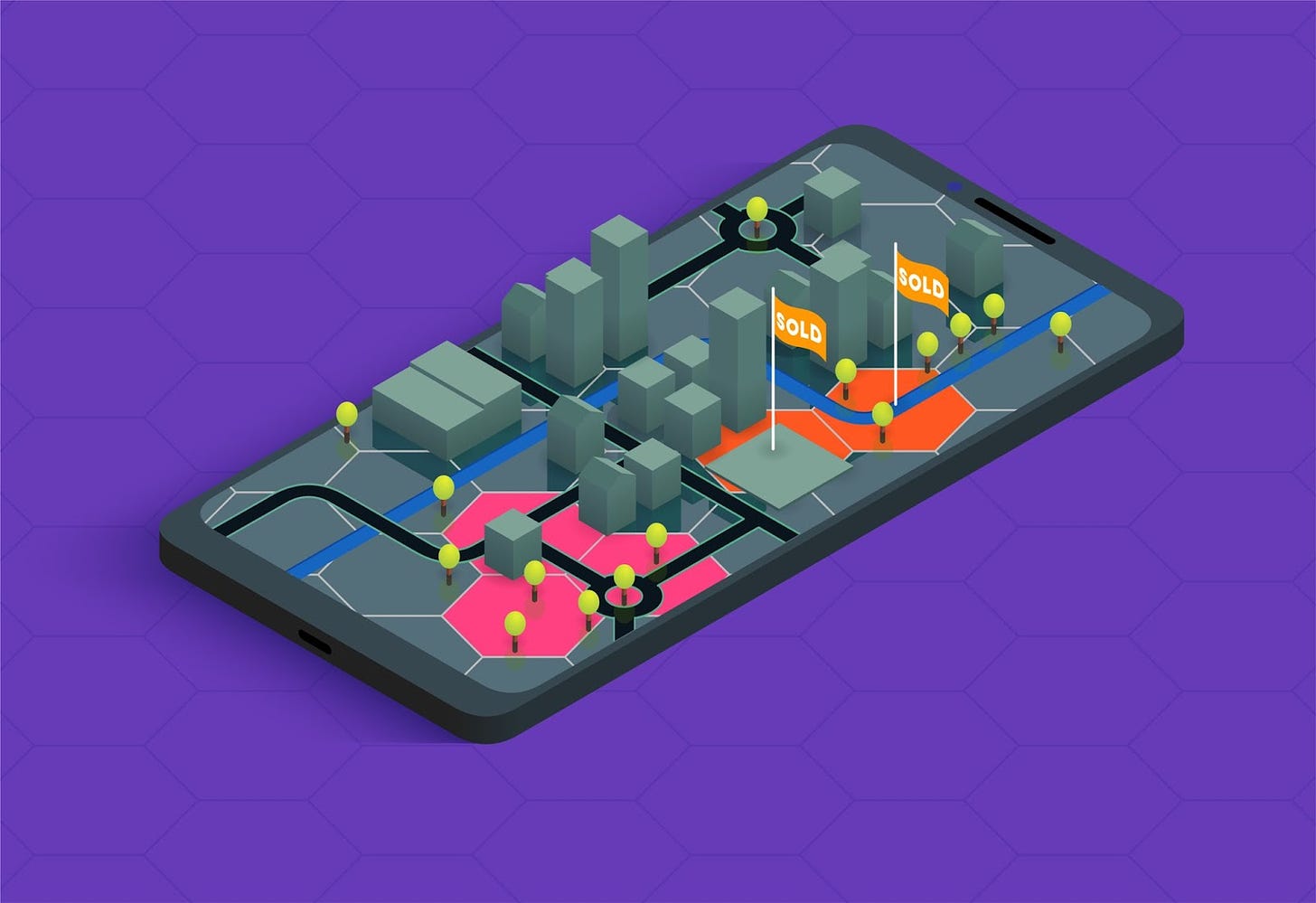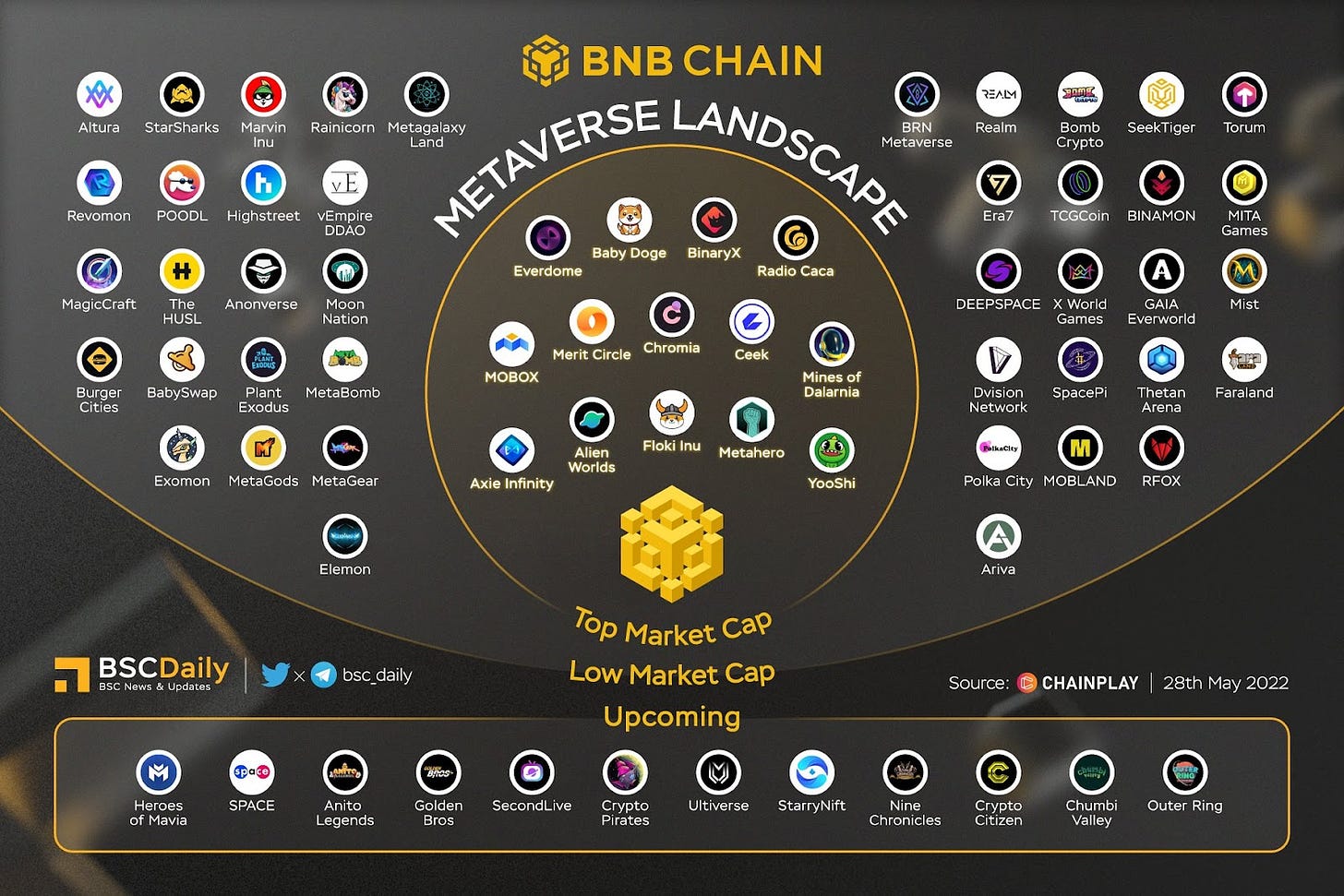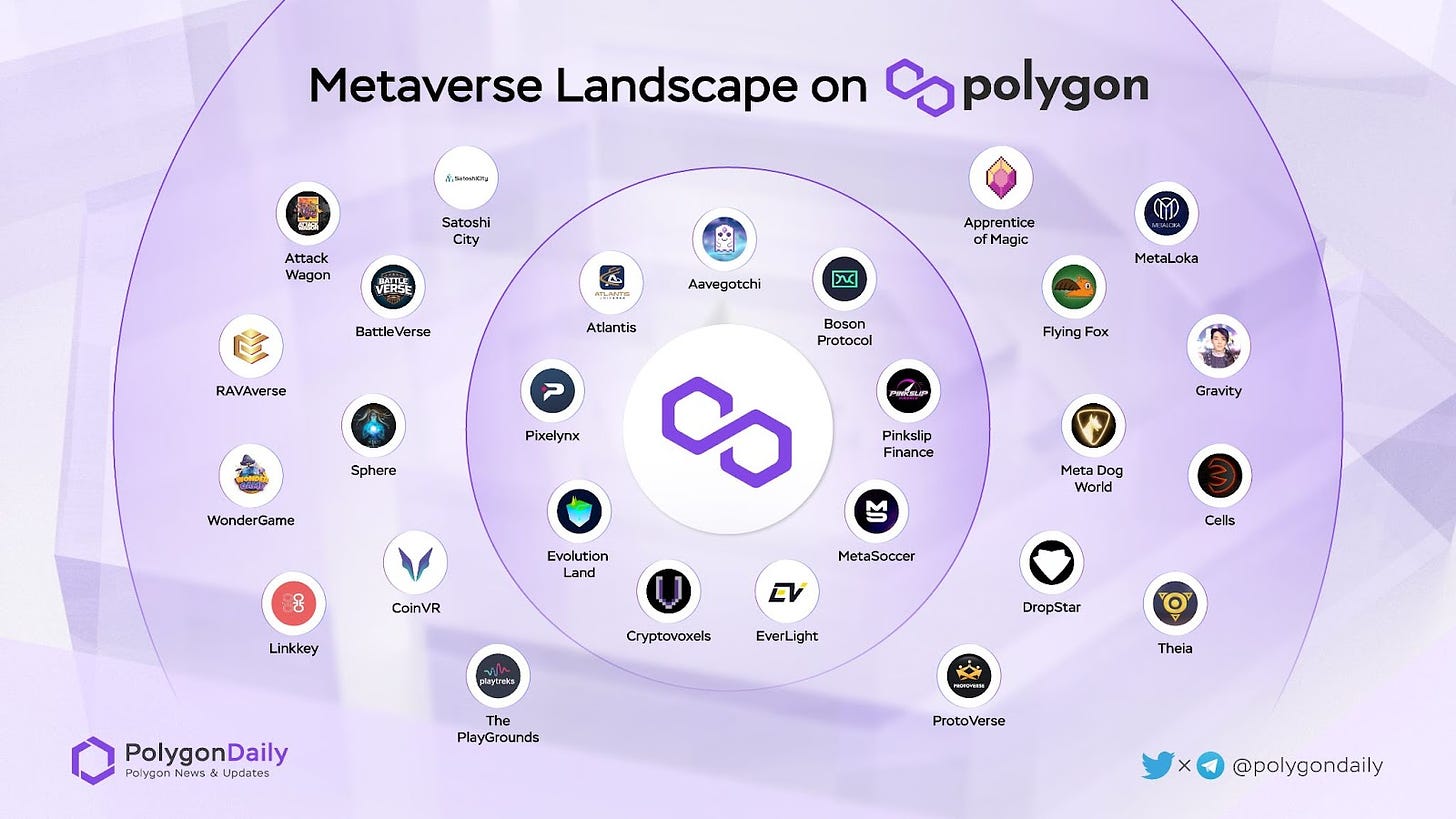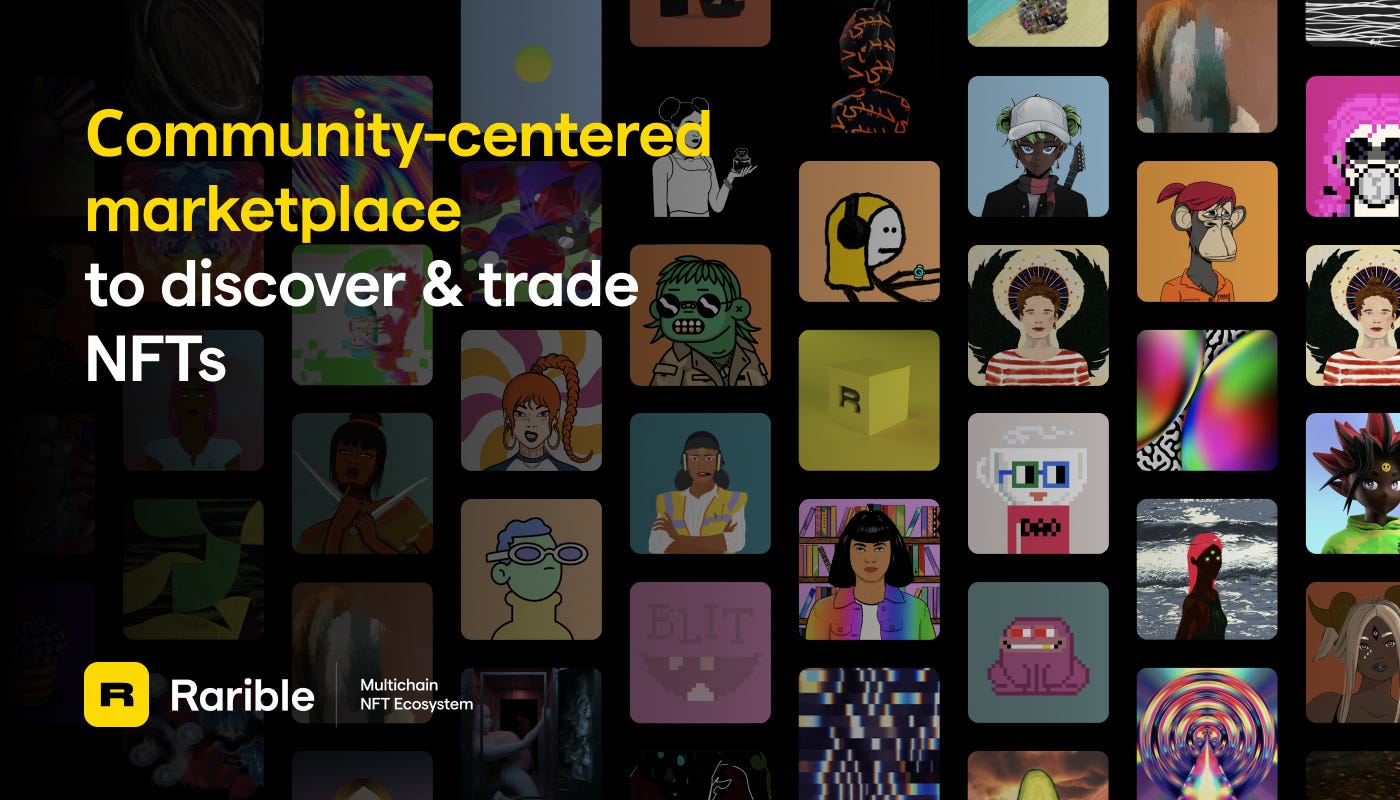Dear Bankless Nation,
Of course, many metaverse projects don’t rely on the EVM — or even use blockchain tech at all, for that matter.
-WMP
🙏 Sponsor: Rarible – discover & trade NFTs across multiple blockchains and communities✨
Why build a metaverse on the EVM?
In building on the EVM, metaverse projects have the ability to plug into borderless and permissionless infrastructure (crypto, DeFi, NFTs, etc.) to build and share what they want, how they want.
That massive cut looks like a mafia play compared to EVM-underpinned marketplace efforts like OpenSea, which charges a 2.5% service fee, and Zora, which currently doesn’t charge any protocol fees.
Accordingly, EVM-based metaverse projects thus have more empowering and more direct ways of bringing their worlds to life. So with that intro out of the way, let’s go through and touch on the EVM metaverse landscape chain by chain.
Ethereum
-
Ethereum’s young metaverse scene continues to facilitate the most NFT trading volume and overall activity in the cryptoeconomy. Much of this activity comes from two of Ethereum’s most popular metaverse projects, Decentralandand The Sandbox.
-
Other notable projects like Voxels(previously Cryptovoxels) and Somnium Spacehave seen their volume levels decline in recent times, though both projects still have committed fanbases and are seen as trailblazers by many in the NFT space.
BNB Chain
-
BNB Chain, formerly Binance Smart Chain, is currently one of the most active EVM chains outside of Ethereum. That comes as no surprise, since Binance has a teeming ecosystem, but if we zoom in at BNB Chain’s metaverse scene, it’s much smaller than Ethereum’s and is filled with projects that have little name recognition outside of Binance’s sphere of influence.
Polygon
-
Billed as affordable, environmentally-friendly, and fast, Polygon has one of the most thriving and fastest growing app ecosystems beyond Ethereum in the contemporary cryptoeconomy. In recent months Polygon’s NFT scene has swelled considerably, which has caused an influx of metaverse builders to turn their attention to this user-friendly EVM.
-
Thanks to its links to Aave, Aavegotchi’s Gotchiverseis presently one of the most recognizable metaverse projects active on Polygon. Voxels is another project that’s been increasingly experimenting with Polygon, too. Other efforts are much smaller right now, though there are many of them. -
Meta-owned Instagram recently announced that it was going to add support for Polygon NFTs. Could this support lead to Meta looking closer at this EVM chain in the future when it comes to its later VR efforts? Only time will tell, but that’s decidedly in the realm of possibility now.
Arbitrum
-
Arbitrum is a popular up-and-coming L2. Its NFT scene is still very small, but it’s steadily gaining traction. Leading the NFT charge on Arbitrum right now is Treasure, which is characterized as decentralized NFT infrastructure for metaverse projects. Some of the projects that have been built on Treasure so far include Bridgeworld, Life, and Smolverse.
Avalanche
-
Avalanche is an EVM chain that doesn’t have much metaverse activity happening on it currently. To be sure, there are some smaller projects building up on Avalanche right now, like Atlantis Worldand Lootex. But this early on, Avalanche’s metaverse ambitions are still mostly aspirational. The chain’s creators are trying though, as evidenced by how they recently proposed that the Otherside metaverse be built atop Avalanche.
Optimism
-
Optimism is a very promising L2 that offers full EVM equivalence, meaning that building on Optimism is effectively just like building on Ethereum. Yet despite this major advantage, the Optimism NFT ecosystem is extremely young and isolated mostly to the Quixoticmarketplace currently. That said, the Optimism metaverse scene is virtually nonexistent for now, though I expect that to change soon as more projects come to embrace the L2’s EVM equivalence.
Zooming out
Altogether, the EVM metaverse landscape is in its earliest years, but its frontiers are starting to be built out in all directions.
The interoperability possibilities that the EVM opens up is a huge part of this growth and will continue to be going forward. Yet it’s also important to recognize the importance of non-EVM and non-blockchain technologies when it comes to actualizing an open metaverse in the years ahead.
Action steps
Author Bio
🙏Thanks to our sponsor
Rarible.com
Not financial or tax advice.
Disclosure.











